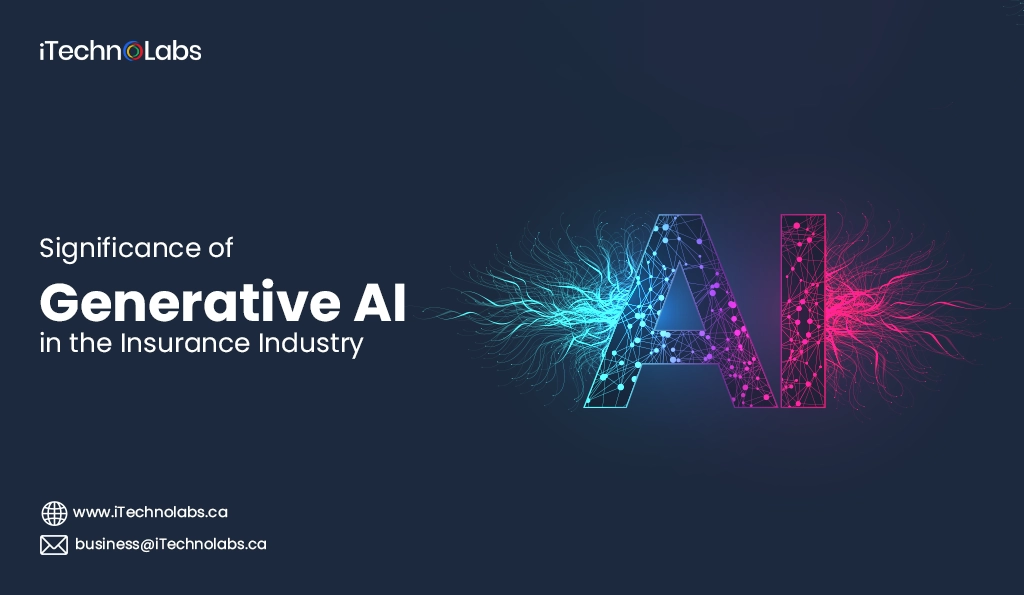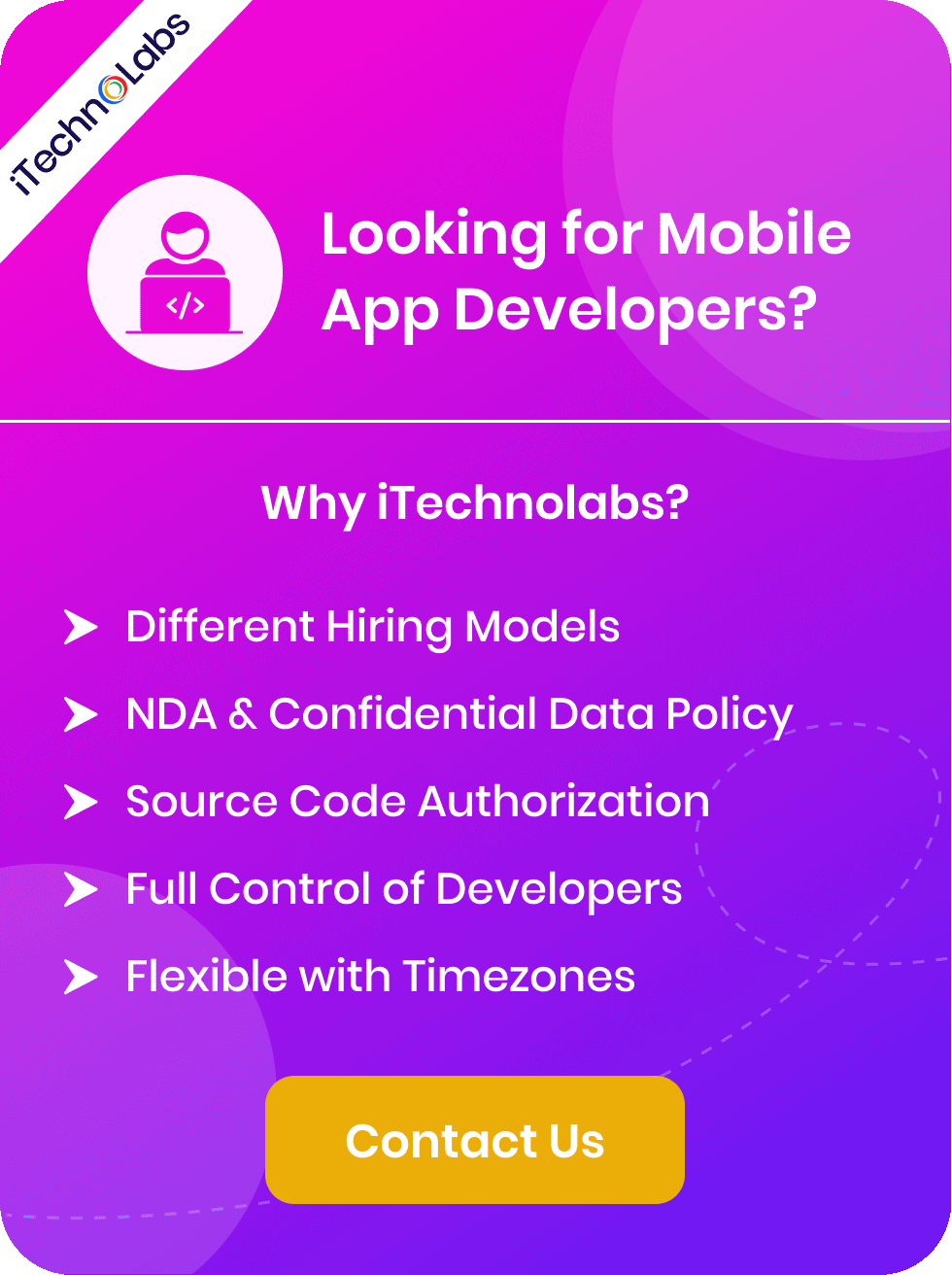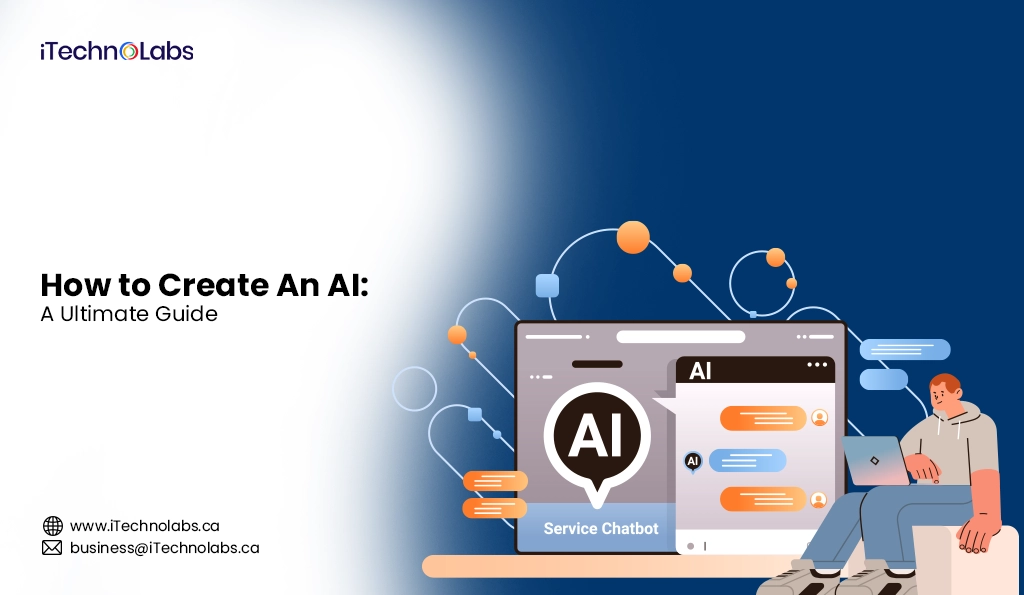The insurance industry has long been deeply rooted in its reliance on vast quantities of data. This foundational reliance has enabled insurers to meticulously assess risk and inform their decision-making processes with precision. Traditionally, this vast trove of data has been pivotal for insurers to calculate premiums accurately, determine coverage limits judiciously, and anticipate future claims with a high degree of accuracy, thereby ensuring financial viability and sustainability within the sector.
However, we are currently witnessing the advent of generative AI technology, a development that marks the dawn of a significant paradigm shift within the insurance industry. As these advanced algorithms grow more prevalent and sophisticated, they are not just augmenting existing processes but promise to revolutionize the entire spectrum of insurance operations. This includes a profound impact on how insurers process claims, offering a more streamlined and efficient approach; how they evaluate risks, yielding more nuanced and dynamic risk assessments; and how they interact with customers, paving the way for more personalized and engaging customer experiences.
Furthermore, generative AI technology has the potential to introduce new products and services that were previously unfeasible, broadening the scope of what insurance can offer. It also stands to enhance fraud detection capabilities, improving the sector’s resilience against fraudulent activities. As a result, the integration of generative AI into the insurance industry is setting the stage for a major transformation in the sector’s operations, promising to redefine industry standards and practices in the years to come.
This seismic shift not only highlights the importance of embracing technological advancements but also underscores the need for insurers to adapt to changing landscapes swiftly. Those who can effectively leverage the capabilities of generative AI will likely secure a competitive edge, heralding a new era of innovation and efficiency in the insurance sector.
What is Generative AI In Insurance?
Generative AI, also known as generative artificial intelligence, represents a specialized branch of AI technology that focuses on employing complex algorithms to generate new and original data. This innovative approach significantly differs from the methodologies employed by traditional AI, which primarily emphasizes the analysis of existing data sets to derive predictions or facilitate decision-making processes.
In the intricate field of insurance, generative AI holds the potential to revolutionize the way insurance products are developed. By leveraging generative AI, insurance companies can create customized policies and products that are finely tuned to meet the unique needs and risk profiles of their customers. This is achieved through the AI’s ability to analyze vast amounts of data and generate solutions that are both innovative and highly personalized.
Furthermore, generative AI can be instrumental in simulating a wide array of scenarios that an insurance company might face. Through these simulations, companies can gain insights into possible future events, allowing them to prepare and respond more effectively. This predictive capability can significantly enhance the decision-making process, ensuring that strategies are both informed and data-driven.
Overall, the application of generative AI in the insurance sector promises not only to streamline operations and improve efficiency but also to introduce a level of customization and foresight previously unattainable. This marks a significant step forward in how insurance products are designed, marketed, and managed, ultimately benefiting both the providers and their clients.
Market Stats of Generative AI In Insurance
- The global market for generative AI in the insurance sector is projected to reach $987 million by 2025, demonstrating a significant growth from $445 million in 2020.
- In 2021, insurance companies leveraging generative AI for personalized product offerings witnessed a 15% increase in customer satisfaction scores.
- The application of generative AI for risk assessment and management has reduced operational costs for insurance companies by an average of 20%.
- There has been a 25% year-over-year increase in the adoption of generative AI technologies by insurance firms globally, signaling a growing industry trend.
- A survey conducted in 2023 revealed that 60% of insurance policyholders prefer companies that offer personalized insurance products, highlighting the consumer demand driving the adoption of generative AI.
- The use of generative AI in fraud detection and prevention has resulted in a 50% decrease in fraudulent claims for insurance companies.
- In 2020, the Asia Pacific region accounted for the highest share of revenue generated from generative AI applications in the insurance sector, with North America following closely behind.
- By 2025, it is estimated that up to 90% of insurance companies will have incorporated generative AI into their business processes to some extent.
Also Read: 60 AI Statistics and Global Trends on Artificial Intelligence
What Are The Benefits of Generative AI In the Insurance Industry?
Risk Assessment Automation
Generative AI has the remarkable capability to sift through extensive datasets, identifying complex patterns and potential risks that might escape human analysis. By leveraging this technology, insurance providers can significantly automate the intricate process of risk assessment. Traditionally, this process has been labor-intensive, relying heavily on manual effort which not only consumes considerable time but also is prone to inconsistencies and errors. Implementing generative AI, however, transforms this scenario completely. It not only slashes the time and manpower needed for these assessments but also enhances the accuracy and consistency with which risk factors are determined. This technological advancement stands to revolutionize how the insurance industry approaches risk management, making it more efficient, reliable, and scalable.
Personalized Pricing Models
Another significant advantage of generative AI in the insurance sector stems from its ability to churn massive amounts of customer data, facilitating personalized pricing models based on individual risk profiles. This concept is referred to as “Usage-Based Insurance” (UBI). By leveraging this technology, insurers can gain a more nuanced understanding of their customers’ driving behaviors, lifestyle choices, and other factors that influence their risk profiles. This allows them to devise personalized policies that are more tailored and cost-effective for individual customers, ultimately leading to customer satisfaction and loyalty.
Claims Processing Optimization
Generative AI can also streamline the claims processing process, which is often a tedious and time-consuming task for insurance providers. By utilizing predictive modeling and natural language processing (NLP) techniques, this technology can analyze and process large volumes of data from claim forms, medical records, and other sources to make quick decisions on payouts or flag potentially fraudulent claims. This not only speeds up the process for customers but also reduces administrative costs and improves overall efficiency for insurers.
Customer Service Enhancement
With the growing use of chatbots and virtual assistants, generative AI can also enhance customer service in the insurance industry. These intelligent software programs can understand and respond to customers’ inquiries, provide personalized recommendations, and even process policy requests. This not only improves response time but also reduces the burden on human employees, allowing them to focus on more complex tasks.
Fraud Detection and Prevention
Fraudulent claims and activities are a significant financial burden, costing insurance companies billions of dollars annually. These illicit actions not only drain resources but also undermine the integrity of the insurance industry. Generative AI has emerged as a powerful tool in combating this issue. By meticulously analyzing vast amounts of data, AI algorithms can identify potential fraud through the detection of unusual patterns, anomalies, or inconsistencies that deviate from normal behavior. These sophisticated systems then flag suspicious claims for further investigation by human analysts. This proactive approach not only saves a substantial amount of money for insurers by preventing payouts on fraudulent claims but also plays a crucial role in protecting honest customers.
Predictive Analytics for Risk Management
Generative AI can also be leveraged to enhance risk management in the insurance industry. By analyzing historical data, these systems can predict future trends and patterns to help insurers make more informed and accurate decisions. This includes identifying potential risks associated with different types of policies, predicting the likelihood of claims for specific customers or regions, and estimating overall loss ratios. These insights enable insurers to adjust premiums, coverage levels, and underwriting guidelines to mitigate potential risks and optimize profitability. Furthermore, AI systems can continuously learn from new data and adjust their predictions accordingly, improving accuracy over time.
Automated Claims Processing
Traditionally, the claims processing process in the insurance industry has been manual and time-consuming. However, with the advancements in generative AI, insurers can now automate much of this process. By using natural language processing (NLP) and computer vision technologies, AI systems can extract relevant data from claim forms, policy documents, medical records, and other sources to validate claims automatically. This not only speeds up the claims process but also reduces errors and ensures consistency in decision-making. Moreover, by combining this with predictive analytics, insurers can identify potentially fraudulent claims and prioritize them for further investigation.
Major Challenges of Leveraging Generative AI in Insurance
While the potential benefits of using generative AI in the insurance industry are vast, some challenges need to be addressed. The following are some of the major challenges:
Data Privacy and Security Concerns
The insurance industry deals with sensitive personal and financial information of customers, making data privacy and security a top priority. Generative AI systems require vast amounts of data to train and operate effectively, and this can raise concerns about the protection of confidential information. Insurers must ensure that proper measures are in place to safeguard customer data and comply with regulations such as the General Data Protection Regulation (GDPR).
Regulatory Compliance and Legal Frameworks
The insurance industry is heavily regulated, and any new technology must comply with legal requirements and standards. Generative AI systems are still relatively new, and there may be uncertainties in terms of how they fit into existing regulatory frameworks. Insurers must work closely with regulators to ensure that their use of generative AI is compliant with laws and regulations. Moreover, insurers may also face legal challenges related to the use of AI, such as liability for errors or discrimination in decision-making.
Customization and Personalization
One of the significant challenges in employing generative AI within the insurance sector lies in the imperative need to train the algorithms on datasets that are both diverse and representative. This aspect gains even more importance in the context of personal lines of insurance, where policies are meticulously tailored to meet the unique requirements of individual customers. In such scenarios, it’s crucial for insurers to vigilantly ensure that their AI systems are designed and trained in a manner that prevents the perpetuation of biases or discrimination. Factors such as race, gender, or socioeconomic status must be carefully considered to avoid any form of inequality. Moreover, the dynamic and evolving nature of societal norms and values calls for a continuous review and update of the datasets used, ensuring that the AI models remain fair and impartial over time.
Risk Assessment and Fraud Detection
Insurance companies play a crucial role in assessing and mitigating risk, which aligns perfectly with the capabilities of generative AI. These advanced systems can sift through immense datasets, including detailed customer profiles, extensive financial records, and comprehensive historical claims data. By identifying underlying patterns within this wealth of information, generative AI can make highly accurate risk assessments. Consequently, this technology empowers insurers to price their policies with greater precision, reflecting the true level of risk more accurately. Additionally, the enhanced analytical capabilities of generative AI significantly improve the detection of fraudulent claims. By quickly analyzing discrepancies and anomalies in claims data that might elude human analysts, these systems can flag potential fraud more effectively, protecting both the insurers and their genuine customers. This integration of generative AI into the insurance sector not only streamlines operational efficiency but also advances the industry’s ability to serve its clients with fairness and integrity.
Interpretability and Transparency
One of the primary challenges faced by generative AI technologies is their inherent lack of interpretability. These advanced systems, designed to autonomously identify complex patterns and make decisions, often operate in ways that are not immediately clear or understandable to humans. This opacity can make it particularly challenging for users to grasp how or why a certain decision was made by the AI. This lack of transparency becomes a significant issue in high-risk applications such as healthcare, where accurate diagnosis and treatment decisions are critical; finance, where investment and risk management strategies can have profound implications; and law enforcement, where outcomes can affect lives and communities. In these fields, AI-generated decisions must be transparent, interpretable, and explainable, not just to ensure accountability but also to build trust in the technologies that play increasingly pivotal roles in critical sectors.
Ethical and Bias Concerns
Another area of concern surrounding generative AI is the potential for ethical issues and bias in decision-making. These systems are trained on vast amounts of data, which can include societal biases and discriminatory practices that may not be apparent to the creators or users. As a result, they risk perpetuating these biases and inequalities if not carefully monitored and addressed. For example, a generative AI used for hiring decisions may favor certain demographic groups over others, leading to discrimination in employment opportunities. In healthcare, biased training data can lead to inaccurate diagnoses and treatments for marginalized communities. Developers and users of generative AI technologies must recognize these potential biases and take proactive measures to mitigate them.
Real-world Use Cases of Generative AI In Insurance
Generative AI has already been implemented in various industries, including insurance. In this sector, generative AI is being used for a range of applications such as fraud detection, risk assessment, and customer service.
Data Augmentation
One intriguing application of generative AI within the insurance sector is data augmentation. This technique involves employing generative models to produce synthetic data, which can then be used to enhance existing datasets. By generating data that mimic real-world scenarios, insurers can significantly increase the volume and diversity of data available for training their algorithms. This, in turn, leads to improvements in the accuracy and robustness of predictive models, enabling more precise risk assessment and policy pricing. Additionally, through the use of synthetic data, insurers can overcome common challenges associated with data scarcity and privacy concerns, further enhancing the overall efficiency and effectiveness of their operations.
Underwriting
Underwriting is another area in which generative AI is being leveraged within the insurance sector. Traditionally, underwriters rely on manual processes to evaluate risks and determine appropriate policy premiums, a task that can be time-consuming and prone to human error. With the adoption of generative AI, insurers can automate these processes and significantly reduce both the time and resources required for underwriting. By training generative models on vast amounts of historical data, insurers can generate accurate predictions and recommendations concerning risk assessment and pricing. This not only streamlines the underwriting process but also minimizes errors and biases, leading to more equitable policy premiums for customers.
Claims Processing And Fraud Detection
Claims processing is another critical function within the insurance industry that can benefit from the use of generative AI. By leveraging advanced techniques such as natural language processing and computer vision, insurers can automate and streamline claims handling processes, resulting in faster and more accurate claim settlements for customers. Additionally, by utilizing generative models to analyze various data sources, insurers can also identify suspicious claims and potential instances of fraud, saving both time and resources.
Quote and Policy Generation
Generative AI is revolutionizing the insurance industry, particularly in the areas of quote and policy creation. By harnessing the power of generative models trained on vast troves of historical data, insurers are now able to generate personalized quotes and policies that are finely tailored to meet the unique needs of individual customers. This process, which leverages sophisticated algorithms to analyze and learn from historical data, enables the production of highly accurate and bespoke insurance solutions in a fraction of the time it used to take.
This technological advancement not only significantly enhances the overall customer experience by providing quick and personalized service, but it also allows insurers to adopt more competitive pricing strategies. By utilizing generative AI to take into account a wide variety of risk factors specific to each customer—ranging from their driving history for auto insurance to their medical history for health insurance—insurers can more accurately assess risk and thus price their policies more competitively. This tailored approach to pricing helps to ensure that customers receive fair, personalized rates that reflect their specific circumstances, thereby fostering greater trust and loyalty between insurers and their clients.
Customer Support And Engagement
Generative AI is also transforming the way insurers engage with and support their customers. By leveraging its natural language processing capabilities, generative models can comb through vast amounts of customer data—including interactions with customer service teams—to identify key trends and patterns. This allows insurers to proactively address common issues and concerns, streamlining their customer support processes and ensuring a more seamless experience for policyholders.
Moreover, generative AI can also be used to create personalized communications with customers, such as tailored policy recommendations or timely reminders for renewals. This level of targeted outreach not only helps to improve customer satisfaction but also increases the efficiency and effectiveness of marketing efforts. Insurers can better understand and anticipate the needs of their customers, creating a more positive and engaging relationship between both parties.
Customer Upsell/Cross-sell Opportunities
Beyond improving customer support and engagement, generative AI can also uncover new upsell and cross-sell opportunities for insurers. By analyzing customer data and understanding their preferences, generative models can identify potential gaps in coverage or suggest additional policies that may be relevant to the customer’s needs.
For instance, if a policyholder has recently purchased a home insurance policy, the model could recommend adding on a flood insurance policy if they live in an area prone to floods. This not only benefits the insurer by increasing revenue, but it also provides added value and protection for the customer.
Read More: Top 10 AI Apps in the USA
Top Generative AI Trends In Insurance
With the rapid advancements in technology, there are several emerging trends and applications of generative AI within the insurance industry. Some of the top trends include:
Automated Underwriting Processes
Traditionally, underwriting processes in insurance have been time-consuming and heavily reliant on manual data analysis. However, with the use of generative AI, insurers can streamline these processes and make more accurate risk assessments based on vast amounts of data. This not only speeds up the process but also reduces the potential for human error.
Personalized Customer Experiences
Generative AI allows insurers to gather and analyze customer data in real-time, providing personalized recommendations and services. This not only improves the overall customer experience but also helps in retaining customers by meeting their specific needs.
Fraud Detection and Prevention
Insurance fraud is a significant problem that costs the industry billions of dollars annually, impacting both insurers and policyholders through higher premiums. By leveraging the power of generative models, companies can sift through massive amounts of data to identify patterns and anomalies that may indicate fraudulent activity. This advanced approach allows for the early detection of potentially fraudulent claims, significantly reducing losses for insurers and contributing to a more stable and trustworthy insurance system.
NLP for Customer Service
Natural Language Processing (NLP) stands as a remarkable application of generative AI with the potential to utterly transform customer service in the insurance sector. By harnessing the power to understand and analyze customer interactions in real-time, insurers are not only able to significantly improve response times but also identify specific areas needing enhancement. Moreover, this technology allows for the optimization of customer satisfaction by personalizing responses and ensuring that customer queries are addressed more efficiently and effectively. Consequently, integrating NLP into customer service strategies can lead to a more dynamic and responsive service model, ultimately benefiting both the insurers and their clients.
Automated Claims Processing
Traditional claims processing is a tedious and time-consuming task, often prone to errors. With the introduction of generative AI, insurers can automate this process, reducing turnaround times, improving accuracy, and freeing up valuable resources for more complex tasks. This technology streamlines the entire claim management process by automatically extracting relevant data from documents and forms, eliminating human error and potential bias. It also enables insurers to handle a higher volume of claims, leading to faster payouts and increased customer satisfaction.
Dynamic Pricing Models
Generative AI can also assist insurers in developing more dynamic and accurate pricing models. By analyzing vast amounts of data, including customer demographics, claims history, and market trends, this technology can provide insights into risk assessment and help determine pricing for premiums. This approach allows for a more personalized and fairer pricing model that considers individual circumstances rather than generalizations. Moreover, it enables insurers to adjust prices in real-time based on changing market conditions, providing a competitive advantage.
Future of Generative AI In Insurance!
The potential for generative AI in the insurance industry is vast and continues to grow as technology advances. As more data becomes available, this technology will become even more powerful, allowing insurers to make data-driven decisions quickly and efficiently. Additionally, with the rise of Internet of Things (IoT) devices and smart sensors, there will be an exponential increase in real-time data that insurers can leverage to improve their processes and offerings further. This could include using real-time data from IoT devices to prevent accidents, assess risk, and provide proactive solutions for customers.
Autonomous Claims Processing
Generative AI holds the key to revolutionizing the insurance industry by streamlining the claims processing journey from submission through to settlement. By automating these tasks, it significantly reduces the duration and associated costs involved in handling claims, while also minimizing the likelihood of human error and bias. This leads to more accurate and fair decisions. Furthermore, the implementation of generative AI in claims processing can enhance customer satisfaction by providing quicker responses and resolutions. This not only benefits the customers, who receive faster and more efficient service, but also insurers, who can operate more effectively and with better resource allocation. In essence, the integration of generative AI into insurance claims processing marks a pivotal step towards more innovative, customer-centric insurance services.
Integration of IoT and Generative AI
The integration of IoT with generative AI is a game-changer for the insurance industry. By combining real-time data from smart devices with powerful AI algorithms, insurers can create more accurate risk profiles and adjust premiums accordingly. This not only benefits the insurer by reducing their risk exposure but also provides customers with fairer and more personalized insurance options. Additionally, the use of IoT sensors can also help detect potential accidents or hazards, allowing insurers to take preventative measures and mitigate risks. This proactive approach not only reduces the likelihood of claims but also improves customer satisfaction by showing a genuine concern for their well-being.
Explainable AI for Transparency
As AI continues to advance, the issue of transparency and accountability becomes increasingly important. This is especially true in the insurance industry, where decisions made by AI algorithms can have significant impacts on customers’ lives. Explainable AI (XAI) addresses this issue by providing a clear and understandable explanation for how an AI system arrived at its decision. This not only improves trust between insurers and customers but also enables insurers to identify any biases or errors in the AI system, ensuring fair and equitable treatment for all customers. In addition, XAI can also help insurers comply with regulations and avoid potential legal disputes by providing transparent documentation of decision-making processes.
How much does it cost to Generate AI in the Insurance Industry?
The cost of implementing AI within the insurance industry can vary widely depending on the scope and complexity of the AI applications being deployed. For small to medium insurance firms, initial investments might range from $50,000 to $500,000 for basic AI deployments, such as chatbots or automated claim processing systems. However, for larger companies looking to integrate advanced AI systems, such as predictive analytics or comprehensive AI-driven risk assessment tools, the cost can escalate to several million dollars. This includes expenses related to hardware, software, development, and integration, as well as ongoing operational costs such as maintenance and updates. Additionally, there may be significant costs associated with training staff and restructuring business processes to accommodate these new technologies.
- Initial Investment: For small to medium insurance firms, the journey into AI begins with initial costs ranging from $50,000 to $500,000. This investment covers basic AI implementations such as chatbots for customer service or automated claim processing systems, which are essential for improving efficiency and customer satisfaction.
- Advanced Systems: On the other hand, larger companies with ambitions to integrate more sophisticated AI systems, including predictive analytics for better decision-making or comprehensive AI-driven risk assessment tools for more accurate underwriting, might face costs running into several million dollars. These advanced systems require a significant investment but promise transformative benefits, enhancing competitive advantage and operational excellence.
- Hardware and Software: A significant portion of the budget must be allocated to procuring the necessary hardware and software. This includes powerful servers to handle AI computations, as well as licenses for specialized AI software platforms. The choice of hardware and software can greatly influence the performance and scalability of AI solutions.
- Development and Integration: Beyond the initial setup, costs associated with the development and integration of AI technologies into the company’s existing systems are substantial. This involves customizing AI solutions to fit unique business needs and seamlessly integrating them with current workflows and databases, which often requires the expertise of external consultants and software developers.
- Operational Costs: The journey does not end with deployment. Ongoing expenses include the maintenance of AI systems, periodic updates to incorporate the latest AI advancements, and the potential need to upgrade hardware or software to keep pace with technological progress. These operational costs are crucial for ensuring the long-term effectiveness and security of AI solutions.
- Training and Restructuring: Finally, there are costs related to training employees to use new AI tools effectively and possibly restructuring business processes to fully leverage AI technologies. This might involve developing new operational protocols, redefining roles, and cultivating a culture open to technological change. The successful adoption of AI not only depends on the technology itself but also on the readiness of the organization and its people to embrace new ways of working.
Suggested: How Much Does it Cost to Create An App
How can iTechnolabs help you to build AI in the Insurance Industry?
iTechnolabs possesses a unique blend of expertise and innovative solutions to propel the integration of AI in the insurance industry. With a seasoned team of AI specialists, we offer tailored AI development and integration services designed to meet the specific needs of insurance companies. Our approach begins with a thorough analysis of your current operations and the identification of key areas where AI can add the most value. From automating claim processing to enhancing customer service with AI-powered chatbots, and developing predictive models for risk assessment, we ensure a seamless integration process. Additionally, iTechnolabs provides comprehensive training for your staff, ensuring they are well-equipped to leverage these new technologies effectively. Our commitment to ongoing support and maintenance helps mitigate operational costs, ensuring your AI solutions remain cutting-edge and efficient. By partnering with iTechnolabs, insurance companies can not only streamline their operations but also offer more personalized, prompt, and accurate services to their clients.
- Expertise and Experience: iTechnolabs brings a deep understanding of both AI technology and the insurance industry, offering a blend of knowledge that is crucial for the successful implementation of AI solutions.
- Custom AI Solutions: The company provides customized AI development and integration services that are specifically tailored to meet the unique needs and challenges of insurance companies.
- Operational Analysis and Integration: Beginning with a comprehensive analysis of your current operations, iTechnolabs identifies key areas for AI integration that can significantly enhance efficiency and service quality.
- Automation of Routine Tasks: By automating tasks such as claim processing and data entry, iTechnolabs helps insurance companies reduce manual errors and free up staff to focus on more complex issues.
- AI-Powered Customer Service: Implementation of AI-powered chatbots and virtual assistants to improve customer service, making it more responsive, personalized, and available 24/7.
- Predictive Risk Assessment: Development of predictive models that help in better risk assessment and decision-making, thereby optimizing the insurance process and reducing costs.
- Staff Training and Support: Comprehensive training for your staff to ensure they are capable of leveraging the implemented AI technologies effectively, coupled with ongoing support and maintenance to keep systems efficient and up-to-date.
- Operational Cost Reduction: Through automation and improved efficiency, iTechnolabs aids in significantly reducing operational costs, thereby increasing profit margins for insurance companies.
Are you looking for AI development services?
Choosing iTechnolabs for AI integration in the insurance industry offers several compelling benefits. Firstly, their approach to custom AI solutions ensures that technologies are not just added, but are integrated in a manner that addresses the unique challenges and needs of each insurance company. This bespoke strategy maximizes efficiency and effectiveness. Furthermore, the automation of routine tasks not only minimizes errors but also frees up valuable staff time, allowing employees to focus on more strategic aspects of their roles. The implementation of AI-powered customer service tools like chatbots enhances the customer experience by providing quick, personalized responses at any time of the day. Predictive risk assessment models developed by iTechnolabs revolutionize decision-making processes, leading to smarter risk management and cost reduction. Additionally, comprehensive staff training and support ensure that the insurance company can fully leverage these new technologies while maintaining system efficiency and relevance through continuous updates. Overall, partnering with iTechnolabs unlocks a new level of operational excellence, customer satisfaction, and financial performance for insurance companies.
- Enhanced Customer Experience: iTechnolabs employs AI to develop intelligent chatbots and customer service tools that offer instant, personalized communication, drastically improving customer satisfaction and engagement.
- Efficiency in Claims Processing: AI integration streamlines the claims process, reducing the time and manual effort required, which leads to faster resolution and increased customer trust.
- Risk Management and Fraud Detection: Leveraging AI algorithms, iTechnolabs enables the insurance industry to better predict and manage risks, as well as detect and prevent fraudulent activities, thereby safeguarding assets and reducing losses.
- Data-Driven Insights for Decision Making: AI technologies facilitate the analysis of vast amounts of data, providing actionable insights that assist in making informed, strategic decisions for product development and market expansion.
- Operational Efficiency: Automation of routine and repetitive tasks through AI not only ensures operational cost savings but also allows staff to focus on more complex, value-added activities.
- Personalized Insurance Plans: AI analyzes individual customer data to offer customized insurance plans that meet specific needs and preferences, leading to higher customer satisfaction and loyalty.
- Continuous Innovation: Collaboration with iTechnolabs ensures access to the latest AI technologies and tools, promoting continuous improvement and enabling insurance companies to stay ahead of emerging trends and competitive pressures.
Important: Revolutionizing App Development: The Ultimate Guide to Generative AI App Builders
Conclusion:
In conclusion, the integration of AI in the insurance industry brings numerous benefits, from improving customer satisfaction to increasing operational efficiency and promoting continuous innovation. With iTechnolabs as a partner, insurance companies can fully tap into the potential of AI and stay ahead in a rapidly evolving market. From personalized insurance plans to data-driven insights for decision-making, AI is revolutionizing the industry and helping insurers better serve their customers. As technology continues to advance, insurance companies must embrace AI and adapt to the changing landscape to thrive in the future.
Frequently Asked Question!
How Does Generative AI Apply to the Insurance Industry?
Generative AI is a type of artificial intelligence that can generate new content, images, or data based on patterns and information it has learned. In the insurance industry, generative AI can be applied in various ways such as creating personalized insurance plans for customers based on their data and preferences, generating automated responses to customer inquiries, or even detecting fraudulent claims by analyzing patterns in data. This technology can greatly improve efficiency and accuracy in insurance processes.
How Much Does It Cost To Build an Artificial Intelligence Project?
The cost of initiating an artificial intelligence project can vary significantly based on several factors, including the project’s complexity and scope. Projects that require advanced algorithms and extensive data processing will generally be more expensive than those with simpler requirements. The availability and accessibility of the necessary data sets, the technology and tools selected for the project, and the amount of development time required are other critical factors that can influence the overall cost. Moreover, the expertise of the personnel involved and the need for specialized skills can further impact the budget. Given these variables, it is advisable to consult with a reputable AI development company that can understand your specific needs and provide a more accurate cost estimate tailored to your project’s unique requirements and goals. This approach ensures that you have a clear understanding of the investment needed and can plan accordingly to achieve your AI objectives.
What is the Future Outlook for Generative AI in the Insurance Industry?
Generative AI has immense potential for transforming the insurance industry, and its future outlook is very promising. With the increasing use of technological advancements such as machine learning, big data analytics, and natural language processing, generative AI is expected to become more sophisticated and capable of handling complex tasks in the insurance sector. This technology can greatly improve customer experience by offering personalized services and faster response times. It can also help insurance companies make more accurate predictions and reduce risks by analyzing vast amounts of data and identifying patterns.
Are Insurance Coverage Clients Prepared for Generative AI?
As with any new technology, there may be some hesitancy and resistance from insurance coverage clients when it comes to generative AI. However, as the benefits of this technology become more evident and its adoption becomes more widespread, clients will have to adapt to the changes in their insurance policies. Insurance companies should communicate clearly with their clients about the use of generative AI and how it will benefit them in terms of faster claims processing, personalized services, and more accurate risk assessment. Adequate education and communication can help ease any concerns or resistance from clients and ensure a smooth transition to using generative AI in the insurance industry.









